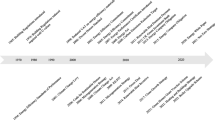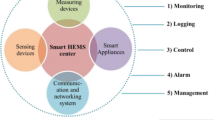Abstract
This study developed a home energy audit methodology for determining energy-efficient, cost-effective measures in existing single-family houses using an easy-to-use simulation. The overall goal of this study was to provide an easy-to-use, time-saving home energy audit for users who are not familiar with building physics and building energy simulation programs such as homeowners, etc. The methodology that was developed can identify the cause of over-consumption in a house prior to a walk-through investigation by showing where the energy is inefficiently being used when compared to houses of similar sizes in similar climates. In order to accomplish this, a methodology for an easy-to-use, calibrated simulation that can determine potential energy conservation measures for existing single-family houses was developed. In addition, to verify the methodology, the results were compared to those obtained from a detailed, as-built residential energy simulation to determine if both the simulation results identified the same potential energy conservation measures. As a result, it was found that the easy-to-use simulation can be used as an as-built simulation for a home energy audit procedure with acceptable results for the case-study house.
Similar content being viewed by others
References
Apogee (2012). Energy Insights. Available at http://www.apogee.net/products/energyInsights.aspx.
ASHRAE (2014). ASHRAE Guideline 14-2014: Measurement of Energy and Demand Savings. Atlanta, USA: American Society of Heating, Refrigerating, and Air-Conditioning Engineers.
ASHRAE (2009). ASHRAE Handbook—Fundamentals. Atlanta, USA: American Society of Heating, Refrigerating, and Air-Conditioning Engineers.
Christman K, Haberl J, Claridge D (2009). Analysis of energy recovery ventilator savings for Texas buildings. In: Proceedings of the 9th International Conference for Enhanced Building Operations (ICEBO), Austin, TX, USA.
Doty S, Turner W (2009). Energy Management Handbook, 7th edn. Lilburn, GA, USA: The Fairmont Press.
Faithful+Gould (2012). Residential Energy Efficiency Measures-Prototype Estimate and Cost Data, Revision 6.0. Beaverton, OR, USA: Faithful+Gould.
Gettings M, Krigger J, Fishbaugher M (2001). National Energy Audit (NEAT) User’s Manual, Version 7. Oak Ridge, TN, USA: Oak Ridge National Laboratory.
Heat and Cool (2014). Cost Estimates for SEER 13 Klimaire Air-conditioner. Available at http://www.heatandcool.com/Klimaire-Condensing-Unit-p/csm60c2p13-aram60h2p-hk152c.htm.
ICC (2009). International Energy Conservation Code. International Code Council, Inc.
ICC (2009). International Energy Conservation Code. International Code Council.
Kim KH (2014). Development of an improved methodology for analyzing existing single-family residential energy use. Ph.D. Thesis, Texas A&M University, USA.
Kim KH, Baltazar-Cervantes J-C (2010). Procedure for packing weather files for DOE-2.1e. Report ESL-TR-10-09-03. College Station, TX, USA: Energy Systems Laboratory.
Kim KH, Haberl JS (2015). Development of methodology for calibrated simulation in single-family residential buildings using three-parameter change-point regression model. Energy and Buildings, 99: 140–152.
Kim S, Haberl JS (2007). Comparative testing of the combined radiant barrier and duct models in the ESL’s code-compliant simulation model. Report ESL-TR-07-02-01. College Station, TX, USA: Energy Systems Laboratory.
Kissock K, Haberl J, Claridge D (2002). Development of a toolkit for calculating linear, change-point linear and multiple-linear inverse building energy analysis models. ASHRAE Research Project 1050-RP.
LBL (1991). DOE-2 Basics. Berkeley, CA, USA: Lawrence Berkeley Laboratory.
Marshall K, Moss M, Malhotra M, Liu B, Culp C, Haberl J, Herbert C (2010). AIM: Web-based, residential energy calculator for homeowners. Report ESL-PA-10-08-02. College Station, TX, USA: Energy Systems Laboratory.
Mendon V, Lucas R, Goel S (2013). Cost-effectiveness analysis of the 2009 and 2012 IECC residential provisions. Report PNNL-220068. Richland, WA, USA: Pacific Northwest National Laboratory.
Mills E, Brown R, Pinckard M, Warner J, Moezzi M, et al. (2007). Home Energy Saver: Documentation of calculation methodology, input data, and infrastructure. Report No. 51938. Berkeley, CA, USA: Lawrence Berkeley National Laboratory.
Mukhopadhyay J, Baltazar-Cervantes J-C, Haberl J, Ellis S (2013). Comparing the implementation of the 2012 IECC to the 2009 Michigan uniform energy code for residential construction. Report ESL-ITR-13-12-01. College Station, TX, USA: Energy Systems Laboratory.
NAHB (2012). The Builders Practices Survey Reports. Upper Marlboro, MD, USA: National Association of Home Builders Research Center.
PexSupply (2014). Cost estimates for 0.63 EF Bradford White water heater. Available at http://www.pexsupply.com/Bradford-White-M-1-TW-50S6FBN-50-Gallon-40-000-BTU-Defender-Safety-System-TTW1-Power-Vent-Energy-Saver-Residential-Water-Heater-Nat-Gas.
RESNET (2006). Procedures for verification of RESNET accredited HERS software tools. Report RESNET Publication No. 06-002. Residential Energy Servicer Network.
SENTECH (2010). Review of Selected Home Energy Auditing Tools: In Support of the Development of National Building Performance Assessment and Rating Program. Glenside, PA, USA: SENTECH, Inc.
USDOE (2012). Home Energy Saver. US Department of Energy. Available at http://hes.lbl.gov/consumer.
USEIA (2012). Annual Energy Outlook. Washington DC: US Energy Information Administration.
Author information
Authors and Affiliations
Corresponding author
Rights and permissions
About this article
Cite this article
Kim, K.H., Haberl, J.S. Development of a home energy audit methodology for determining energy-efficient, cost-effective measures in existing single-family houses using an easy-to-use simulation. Build. Simul. 8, 515–528 (2015). https://doi.org/10.1007/s12273-015-0238-3
Received:
Revised:
Accepted:
Published:
Issue Date:
DOI: https://doi.org/10.1007/s12273-015-0238-3




